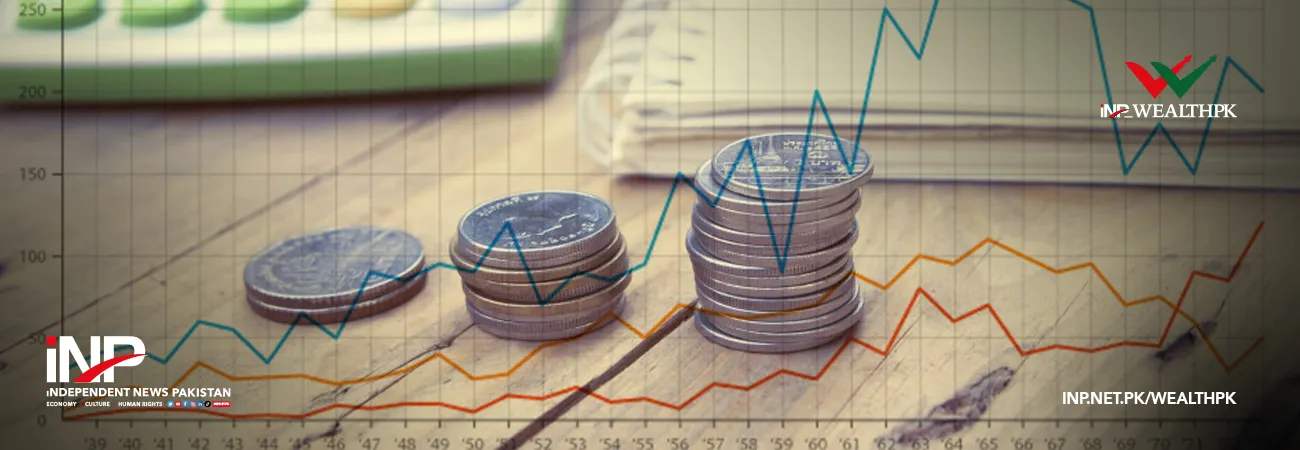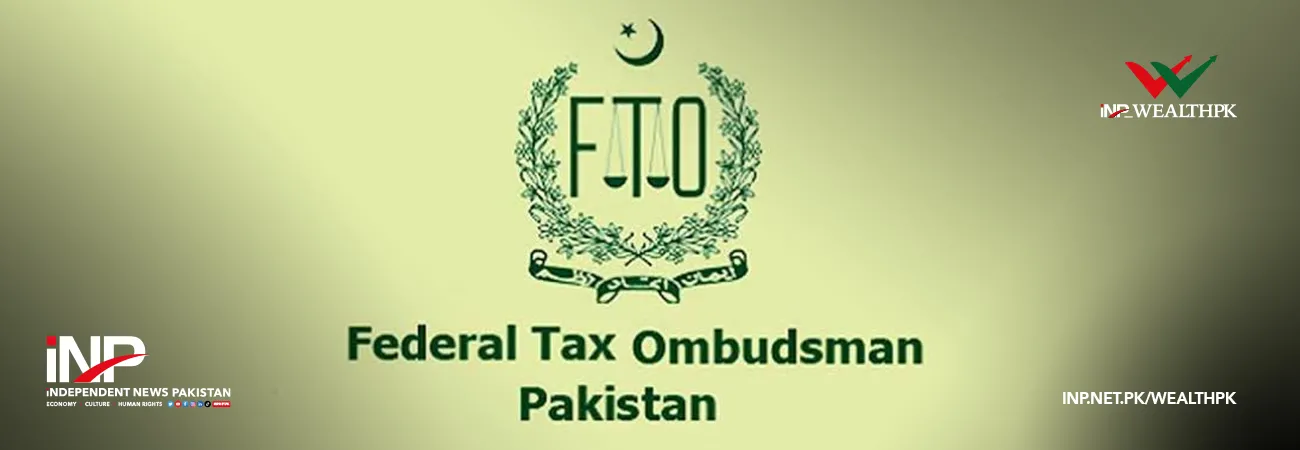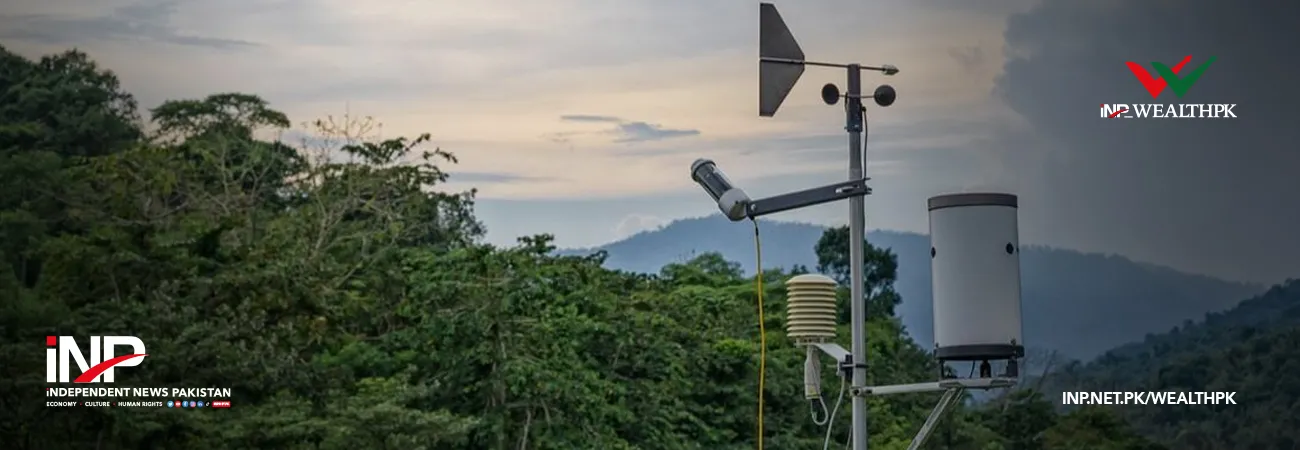INP-WealthPk
Farooq Awan
Pakistan’s external position strengthened sharply in fiscal year 2024-25 as foreign-exchange reserves rose to their highest level in four years, the rupee remained broadly stable, and the country recorded its first current-account surplus since 2011.
The State Bank of Pakistan’s Annual Report 2024-25 attributes this turnaround to restrained imports, robust workers’ remittances, concessional inflows from multilaterals and friendly countries, and prudent exchange-rate management that rebuilt confidence after years of volatility.

According to the report, the current account posted a surplus of US$2.1 billion in FY25, a sharp reversal from a US$2.07 billion deficit the previous year. Workers’ remittances climbed to a record US$38.3 billion, nearly US$8 billion higher than FY24, becoming the single largest source of external financing.
The inflow reflected targeted incentives introduced by the central bank, including the reimbursement of telegraphic transfer charges and the promotion of formal channels through licensed exchange companies. The SBP noted that these measures, coupled with its ongoing reforms in the exchange-company sector, almost eliminated the kerb-market premium and improved liquidity in the inter-bank market.
The country’s foreign-exchange reserves rose by US$5.1 billion to US$14.5 billion by the end of June 2025, sufficient to cover 2.4 months of imports, up from only 1.6 months a year earlier. The buildup resulted from the current-account surplus, net inflows in the financial account, and disbursements under the IMF’s Extended Fund Facility.
Pakistan also obtained short-term financing exceeding US$750 million from the Islamic Development Bank and the Kingdom of Saudi Arabia to support energy imports, while China emerged as the largest bilateral lender, providing US$583 million mainly for nuclear-power and satellite projects aimed at diversification and technological modernization.
The SBP said commercial loans contributed about 35 percent of total external assistance, amounting to US$4.3 billion, most of which represented refinancing and new funds guaranteed by the Asian Development Bank. In addition, Pakistan received US$2.1 billion from the IMF after completing the first program review and secured access to a US$1.3 billion Resilience and Sustainability Facility to bolster climate-related resilience.
These inflows, along with disciplined external-account management, allowed the SBP to make net purchases of US $ 7.7 billion from the foreign-exchange market while simultaneously reducing its forward-swap liabilities by US $950 million, an improvement in the quality of reserves, according to the report. The rupee depreciated by just 1.9 percent against the US dollar during the year, compared with 28 percent slide two years earlier, reflecting restored market confidence and improved availability of foreign exchange.
The SBP emphasized that its operations were limited to smoothing volatility rather than fixing any specific rate, consistent with the flexible-exchange-rate regime. It credited the stability to consistent policy coordination, a narrower fiscal deficit, and better alignment between inter-bank and open-market rates. Trade performance was mixed. Exports grew moderately to US$32 billion as global demand recovered, but imports expanded faster to US$63 billion due to higher volumes of industrial raw materials.
The SBP explained that the widening of the merchandise trade gap was offset by the services surplus and record secondary-income inflows. It observed that the increase in imports was largely volume-driven rather than price-driven, as international commodity prices, particularly oil and food, remained soft throughout much of FY25. External-debt dynamics also improved. The share of concessional, long-term borrowing rose above 70 percent of total external public debt, while reliance on short-term credit declined. Debt-servicing as a ratio of exports and remittances fell, and the ratio of short-term debt to reserves improved markedly.
The SBP said these developments reduced rollover risks and improved sustainability. It highlighted that improved coordination between the Ministry of Finance and the SBP enabled better scheduling of external repayments and pre-payment of expensive bilateral credits. The central bank observed that rating agencies upgraded Pakistan’s outlook in mid-2025, acknowledging the improvement in external and fiscal indicators.
Portfolio inflows began to re-enter the local debt market, particularly into long-term Pakistan Investment Bonds and Sukuk, supported by lower inflation and reduced policy-rate uncertainty. The report noted that the stability of the exchange rate and the buildup of reserves “significantly strengthened investor sentiment and reduced the perception of default risk.” Despite these gains, the SBP cautioned that the external position remains vulnerable to global shocks.
It pointed out that much of the improvement still depended on remittances and official inflows rather than on a broad-based export surge or strong private investment. The report recommended sustained export diversification, removal of tariff distortions, and development of logistics and technology infrastructure to enhance competitiveness. It urged policy continuity to prevent a resurgence of external pressures if oil prices rise or import demand accelerates.
The report further said that the government’s decision to rationalize import tariffs was a positive step toward export-led growth, but must be complemented by reforms that enhance productivity and create an enabling environment for investors. It advised close monitoring of global monetary conditions and domestic energy prices to preserve external stability. Concluding its analysis, the SBP remarked that Pakistan’s external-sector improvement in FY25 demonstrated the impact of disciplined macroeconomic management and the benefits of policy credibility.
It said the buildup of reserves, moderation of exchange-rate volatility, and restoration of current-account balance represent “a critical inflexion point in the country’s path toward sustainable stability.” The report emphasized that maintaining these achievements will depend on continued fiscal restraint, targeted industrial policy, and consistent external-financing strategies aimed at deepening resilience.
Credit: INP-WealthPk













